Table of contents
I got in touch with three veteran Star Wars visual effects (VFX) artists to ask them about working on Star Wars and the role of VFX. Their work spans much of the Star Wars’ history going back to Empire Strikes Back and going right up to the present day.
Trent Claus
Lola Showreel 2020 from Lola Post on Vimeo.
Trent Claus is a visual effects supervisor at Lola VFX. A visual effects supervisor leads the effort to translate a director or producer’s vision to the screen through the use of visual effects. Trent has worked on over 120 films, with 20 from the Marvel Cinematic Universe alone. His work for Marvel includes: Captain America: The First Avenger, Captain Marvel, and Avengers: Endgame. Also, his stunning VFX work can be seen on The Mandalorian, Blade Runner- The Final Cut, and Prometheus.
Credits
Black Widow (visual effects supervisor: Lola Visual Effects)
WandaVision (TV Mini Series) (visual effects supervisor)
The Mandalorian (TV Series) (visual effects supervisor – 2 episodes)
It Chapter Two (compositor – uncredited)
Spider-Man: Far from Home (compositor)
Avengers: Endgame (visual effects supervisor: Lola VFX)
Captain Marvel (visual effects supervisor: Lola VFX)
Ant-Man and the Wasp (visual effects supervisor: Lola VFX)
Solo: A Star Wars Story (compositor)
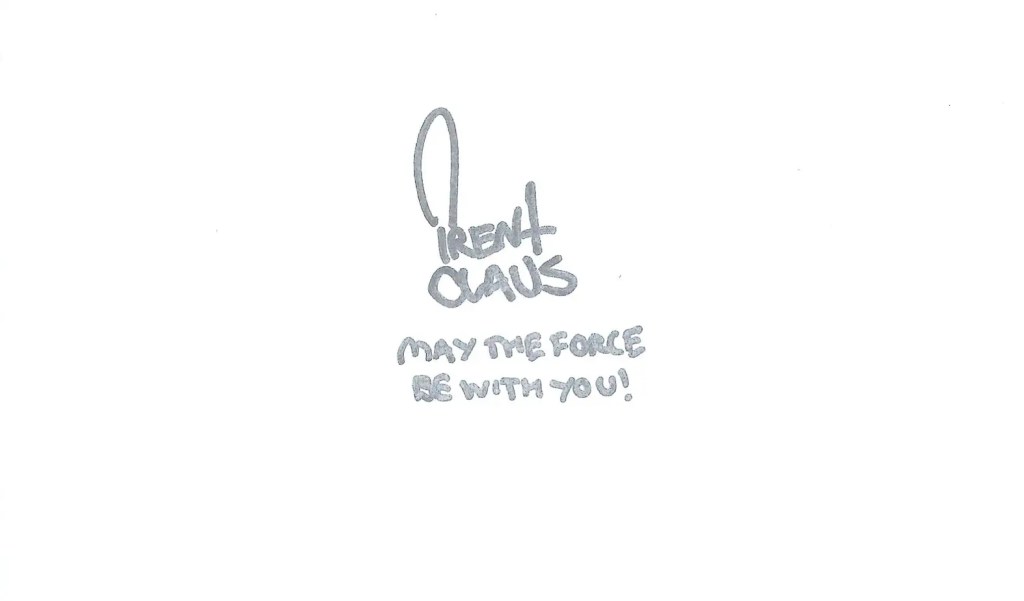
Jay Machado
Jay is a Model Supervisor at Industrial Light and Magic, specializing in hard surface modeling, texture painting and look development. He has worked at ILM for seven years, and has nine years of experience as a modeler. His credits include The Mandalorian, Millennium Falcon: Smuggler’s Run, Rogue One, Star Wars: The Force Awakens, and Transformers: Age of Extinction. In addition to his work on feature films, Jay has worked on music videos, commercials, AAA games, and amusement park rides. He is also exploring physically based rendering, VR, game development, and 3D printing outside of work.
Credits
The Mandalorian (TV series) (Model Supervisor)
Millennium Falcon: Smuggler’s Run (Video Game) (Lead Hard Surface Modeler)
Transformers: The Last Night (Hard Surface Modeler)
Rogue One: A Star Wars Story (Hard Surface Modeler)
Star Wars: Episode VII – The Force Awakens (Hard Surface Modeler)
Transformers: Age of Extinction (Hard surface Modeler)
Noah (Creature Modeler)
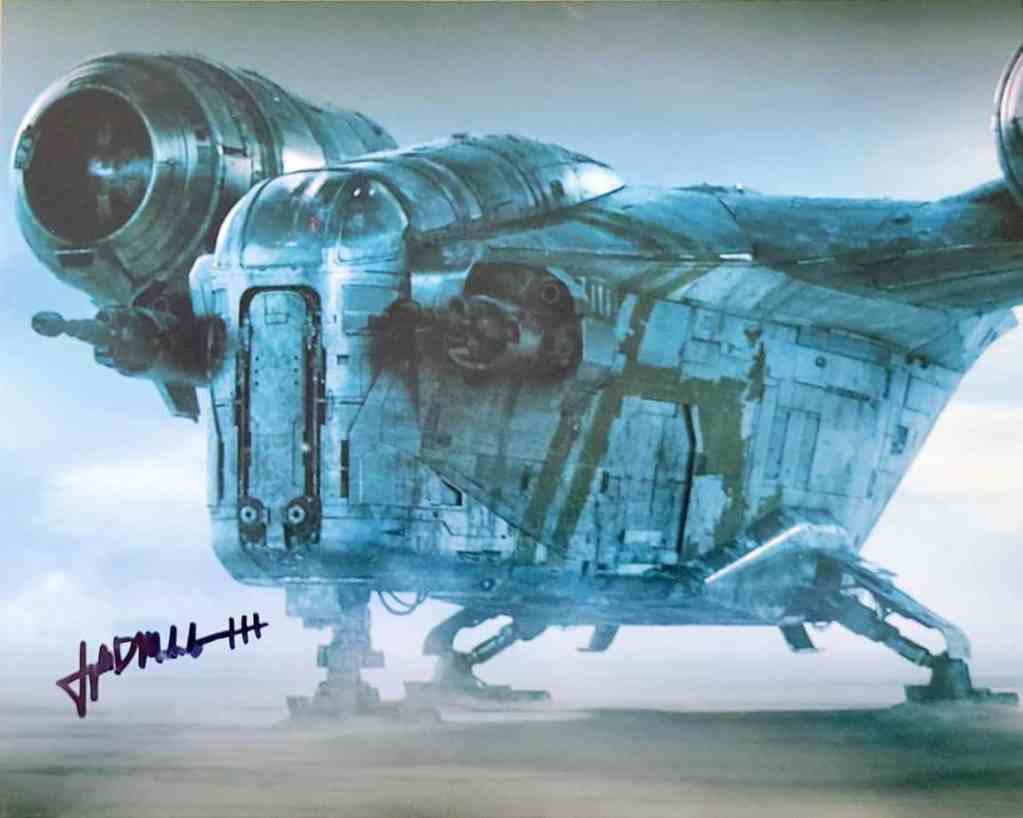
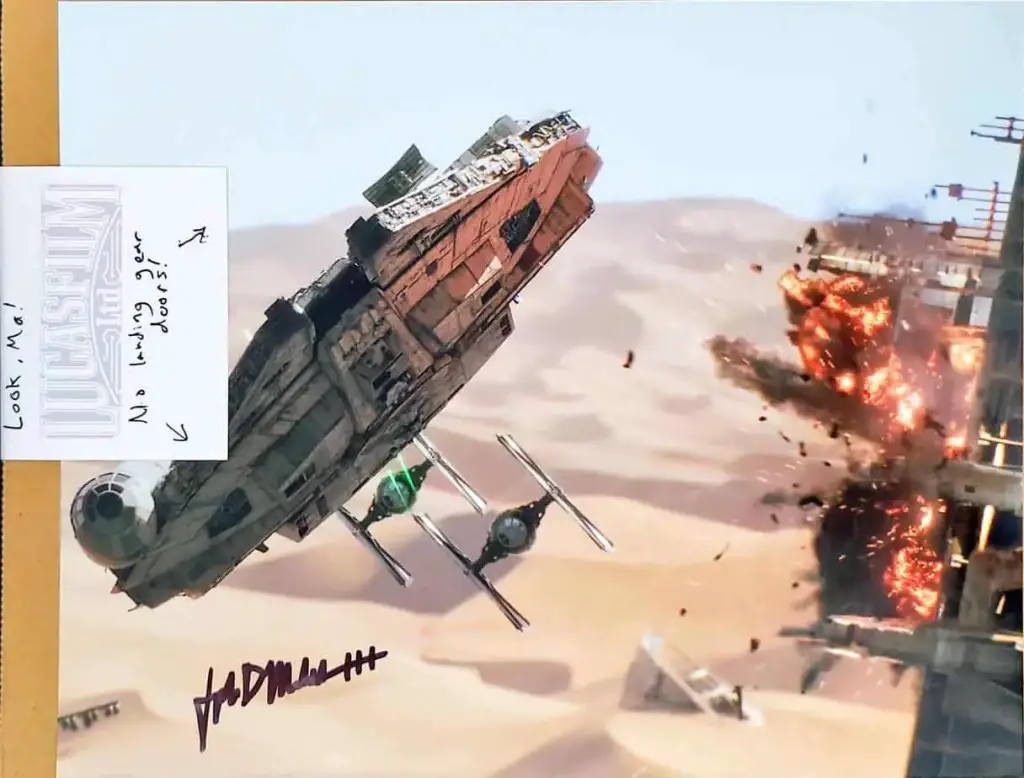
David Carson
Dave Carson is an extremely talented artist who has held many different roles on multiple films within the Star Wars saga. He is an artist who started working on storyboards, transitioned to work in the Creature Shop as a sculptor, and eventually went on to be a visual effects supervisor at a time when computer effects were just beginning to make an appearance in film. His work has left a lasting mark on so many of the movies we love. From his start on The Empire Strikes Back to bringing the Gamorrean Guards to life in Return of the Jedi, he also worked on Star Tours and the Special Editions.
Credits
Jurassic Park (digital artist – as David Carson)
Hook (computer graphics)
Willow (visual effects art director: ILM)
Star Tours (Short) (storyboard artist: ILM – uncredited) / (visual effects supervisor: ILM – uncredited)
The Goonies (visual effects art director: ILM – as David Carson)
Star Trek III: The Search for Spock (visual effects art director – as David Carson)
Star Wars: Episode VI – Return of the Jedi (visual effects supervisor – special version)
Dragonslayer (dragon set designer: ILM)
Star Wars: Episode V – The Empire Strikes Back (model maker: miniature and optical effects unit)
Star Wars: Episode IV – A New Hope (visual effects supervisor: ILM – 1997 special version)
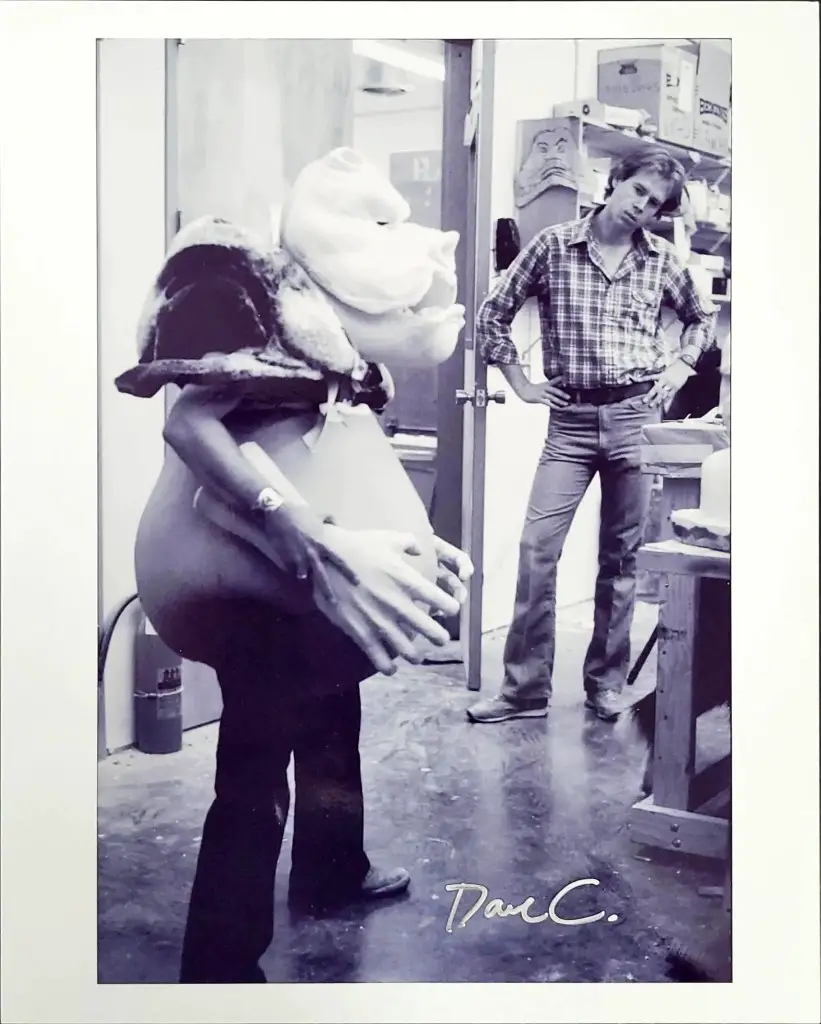
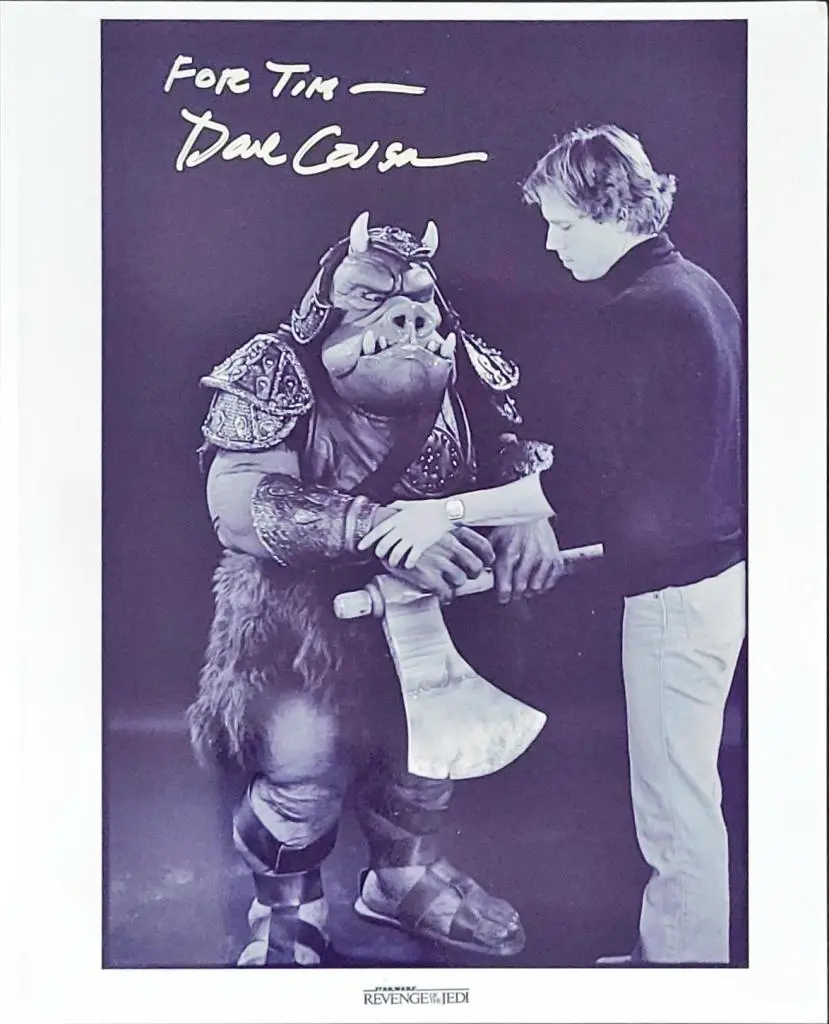
VFX Artists Q & A
How do you see the relationship between VFX and practical effects and where do you see that going in the future?
Trent Claus – The relationship between practical and digital effects is a collaboration and partnership – in the end, they are all effects trying to fool the viewer into believing in the reality of the story. The goal of the filmmaker should always be to pick the best tool for each particular challenge.
Jay Machado – Despite huge leaps forward in quality, CG VFX still work best when blended with practical effects. It isn’t just about realism anymore because CG has reached a pretty realistic look, but also audience taste. Practical effects have a certain character to them that audiences still enjoy even if it doesn’t look real which is why the puppet of Grogu is so beloved and so much effort was put into the CG version to match the motion of the puppet. Stagecraft has really facilitated that blend of practical and CG with practical props and set pieces in the foreground and digital backgrounds that not only provide actors with context and improve their performance and the quality of lighting on them but also allows us to get final shots in camera in a way that wasn’t possible before. It’s been an amazing technology to be involved with and really makes the future of movies and TV very exciting.
David Carson – I think the industry is learning that certain effects are best done in the computer, others as practical, others as high-speed miniatures, etc. And the blending of effects and live action is becoming more powerful with the introduction of on-set LED screens.
What kinds of assets do you enjoy working with the most for the show?
Trent Claus – Like many, I not only worked on the show, but was also a fan. So working with anything is always exciting!
Jay Machado – Spaceships! My career has really been so awesome because I’ve had the privilege of working on so many iconic spaceships from Star Wars. I’ve always loved spaceships in general and the legacy of Star Wars ships has always been fascinating to me. It’s been fun to work on them in a modern context because it’s a perfect mix of upholding that legacy, faithfully recreating the look and feel of those old filming miniatures, and adding details to them to add to their realism and scale of them. Even new designs like the Razorcrest were super fun to be involved with. I really enjoy texturing these assets as well. The “lived-in universe” of Star Wars and all the rusty, oily, grimy surfaces are super fun to paint.
David Carson – I’m retired now, but back when I was working I liked all of it. Practical, storyboards, sculpting, concept art – everything. I was very lucky to have a chance to work with all of those disciplines during my career.
Are there any unique challenges when working on a Star Wars property?
Trent Claus – There are always challenges on any project, but certainly one that can’t be overlooked with Star Wars is the exacting detail that fans scrutinize the work. Always keeps everyone on their toes!
Jay Machado – There is an aesthetic to Star Wars that I’ve seen people struggle with, but I think my close relationship with Star Wars from my childhood fascination to all of the research I’ve done on the subject in terms of what model kit parts were used in the original miniatures have really helped me understand it. As I mentioned before we do need to add realism and scale to some of the classic designs of the miniatures, often because the miniatures themselves are small and we need to see them up close. Finding that balance of adding detail and areas of rest is challenging. There’s a temptation to add more and more but it’s easy to get into Transformers territory in terms of complexity. Areas of rest are important, and that goes for texture painting as well!
David Carson- George [Lucas] was usually willing to spend what it took to get the work done. He was very money-conscious, but he knew where the money needed to be spent. The hardest thing was knowing that the films were so popular and people had very high expectations
![Star Wars Visual Effects Artist Round-Up [From ESB to The Mandalorian]](https://talesfromthecollection.com/wp-content/uploads/2021/10/Star-Wars-Visual-Effects-Artist-Round-Up-From-ESB-to-The-Mandalorian-1024x576.png)
